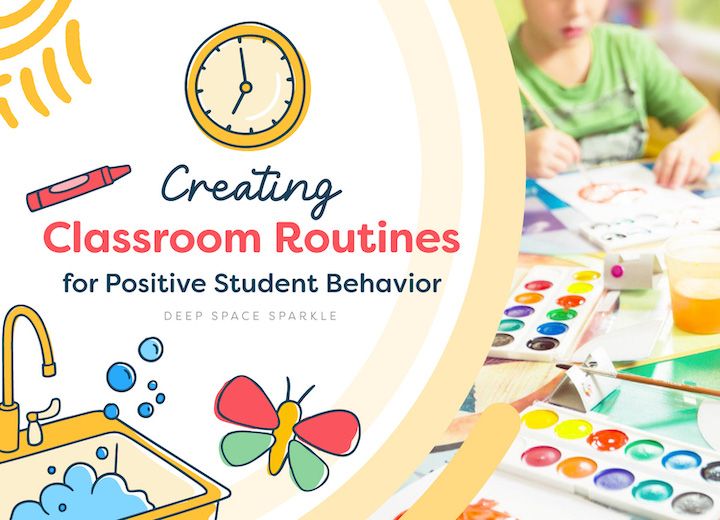Addressing Attention-Seeking Behavior: Strategies For Providing Alternatives
Attention-seeking behavior refers to actions intended to attract notice, praise, sympathy, or reassurance from others (https://en.wikipedia.org/wiki/Attention_seeking). This can manifest in exaggerated emotional displays, inappropriate outbursts, rule-breaking, or excessive need for approval. While often perceived negatively, attention-seeking stems from an underlying need for connection, validation, or a sense of self-worth.
Addressing attention-seeking constructively is important for several reasons. Criticism or punishment can worsen feelings of insecurity. Providing alternatives teaches positive ways to fulfill core needs. A supportive response develops self-regulation and deepens parent-child bonds. With insight and patience, caregivers can guide attention-seekers toward growth and maturity.
Understanding the Causes

There are various reasons why someone may engage in attention-seeking behavior. Often, the root causes relate to unmet emotional needs or challenges with emotional regulation. Some potential causes include:
Low self-esteem – People with poor self-worth may seek external validation through attention-seeking actions. They want reassurance that they matter. [1]
Insecurity – Attention-seeking can be a way to cope with feelings of insecurity. The person wants to know they are valued by others. [2]
Lack of connection – Attention-seekers often feel lonely or disconnected from others. The behavior may be an attempt to fulfill unmet needs for belonging. [3]
Trauma – Past emotional wounds or adverse experiences can drive attention-seeking actions. The person may have attachment issues or use the behavior as a cry for help. [1]
Personality disorders – Some mental health conditions, like histrionic personality disorder, are associated with excessive attention-seeking. Treatment of the underlying disorder can help. [3]
Emotional dysregulation – Poor emotional control and distress tolerance can manifest as inappropriate attention-seeking actions. The person may lack other ways to self-soothe or communicate needs.
Setting Clear Boundaries
Setting clear boundaries around acceptable behavior is crucial for addressing attention-seeking actions. According to Psychology Today, “Remove the positive reinforcement for attention-seeking behavior” is one of the key strategies for dealing with a compulsive attention-seeker (source). If inappropriate attention-seeking actions are rewarded through indulgence or reaction, it will only encourage more of the same behaviors. On the other hand, establishing and enforcing limits prevents enabling and teaches the attention seeker that certain conducts are not acceptable ways to fulfill their needs.
Some examples of setting boundaries include giving a warning that you will disengage after one attention-seeking outburst, ending a conversation if the person tries to monopolize the discussion, or temporarily limiting interactions if disrespectful attention-seeking continues after requests to stop. Though initially challenging, remaining consistent in upholding boundaries communicates that you care about the person but will not accept manipulation or mistreatment. It also models healthy relationship skills and gives the attention seeker an opportunity to find more constructive ways to feel valued.
Providing Positive Attention
One of the most effective strategies for addressing attention-seeking behavior is to provide the person with positive attention when they engage in desirable behavior. This reinforces good behavior and shows the person that they can receive attention without resorting to negative means (The Power of Positive Attention). When giving positive attention, it’s important to be specific – praise the actual behavior rather than just saying “good job.” For example, “I appreciate you waiting patiently instead of interrupting.” It also helps to give attention immediately after the good behavior and to make eye contact and smile to add warmth. Providing a pleasant activity as a reward is another great way to reinforce positive attention-seeking. With consistency over time, the person will learn that positive behavior garners positive attention.
Teaching Emotional Regulation
Helping someone learn to better manage their emotions in a healthy way involves teaching skills like identifying triggers, tuning into physical symptoms, reframing unhelpful thoughts, and expressing feelings appropriately. Strategies include:
– Practicing deep breathing techniques to calm the body when upset. Taking slow deep breaths signals the brain to relax.
-Noticing body cues. Tense muscles, headaches, or stomach aches can be signs of poorly managed emotions. Help them tune into these signals.
– Identifying unhelpful thoughts and cognitive distortions like “everyone is against me.” Guide them to reframe the situation more objectively.[https://positivepsychology.com/emotion-regulation/]
– Validating feelings while redirecting behavior. “I understand you feel angry. Let’s take a break and then we can discuss this calmly.”
– Encouraging healthy outlets like exercise, art, or writing to process emotions.
– Modeling appropriate emotional responses in various situations.
– Using coping statements like “This too shall pass.”
– Building a vocabulary for emotions. Help them learn to name feelings beyond just sad, mad or glad.
– Providing choices to give a sense of control. “Would you like to take a walk or draw to feel better?”
With time and consistency, they can learn how to manage difficult emotions effectively. The key is equipping them with regulation skills and modeling healthy responses.
Fulfilling Core Needs
People engage in attention-seeking behavior to fulfill core psychological needs that are not being met in healthy ways. According to psychologist Tony Robbins, all human behavior is driven by six core needs: certainty, variety, significance, connection, growth, and contribution. For those prone to attention-seeking, the needs for significance and connection are often especially strong.
Significance refers to the need to feel important, valued, and respected. Attention-seekers may act out to feel significant in the eyes of others. Providing positive attention and encouragement when they engage in good behavior can fulfill this need in a healthy manner. Finding opportunities for them to meaningfully contribute can also make them feel significant.
Connection refers to the need to feel closeness and belonging. Attention-seekers may act out because they feel lonely or disconnected. Providing consistent warmth and quality time, and helping them form healthy relationships, can fulfill the need for connection. Family counseling or peer support groups can also help meet this need.
By understanding these core needs and finding healthy ways to meet them, the motivation for negative attention-seeking can be reduced. But patience and consistency are vital, as these needs may have gone unfulfilled for a long time. Working with a mental health professional can provide additional guidance on fulfilling emotional needs appropriately.
Encouraging Positive Goals
One effective strategy is to redirect the person’s energy and need for attention into more positive goals and activities. This gives them a healthy outlet and sense of purpose. According to Understanding IEP Goals for Addressing Attention Seeking Behavior, setting goals around building skills, talents or hobbies can help minimize attention-seeking behaviors. Work collaboratively to identify interests the person is intrinsically motivated by. Then, guide them to set SMART goals around those interests, like learning to play guitar or improve their drawing skills. Praise effort and progress to reinforce this positive direction. Having prosocial goals to work towards will fulfill their need for attention in a productive way.
Providing Outlets for Self-Expression
It is important to provide appropriate outlets for a child or teen to express themselves creatively. Self-expression can help satisfy the underlying need for attention while channeling it in a healthy way. Encourage positive forms of self-expression like art, music, dance, creative writing, poetry, theater, and journaling. Find activities that align with the child’s interests and talents. Consider signing them up for an art class, music lessons, a school play, or a writing club. At home, make arts and crafts supplies readily available and set aside a space for creative activities.
Self-expression gives children an opportunity to process and communicate their feelings. It can also boost self-esteem and provide a sense of accomplishment. Praise their efforts and display their artwork or writing to show you value their self-expression. But be sure not to heavily critique their work, as the goal is to encourage the act of creating. Allowing safe outlets for self-expression helps meet the child’s needs in a healthy way.
“Having an outlet for expressing your emotions is an integral part of building your identity and it’s important to learn to create time and space for this.” (Source)
Seeking Additional Help
In some cases, persistent or extreme attention-seeking behavior may indicate an underlying mental health issue that requires professional treatment. These issues could include (cite: https://www.medicalnewstoday.com/articles/attention-seeking-behavior):
- Personality disorders like histrionic personality disorder or borderline personality disorder
- Mood disorders like depression or bipolar disorder
- Trauma from past abuse, neglect, or abandonment
- Neurodevelopmental disorders like ADHD
A mental health professional can help diagnose any underlying conditions and provide appropriate treatment through counseling, therapy, or medication. This can help address the root causes driving attention-seeking behaviors. It’s important not to simply dismiss someone’s attention-seeking actions but to have empathy for what unresolved needs may be motivating those behaviors. Professional support can help people develop healthier emotional regulation, coping strategies, and ways to get their needs met.
Being Patient and Consistent
When addressing attention-seeking behaviors, it is crucial to be patient and consistent in your responses. These behaviors often become ingrained over time, so undoing them requires effort and perseverance. Avoid reacting with frustration or anger, as this can inadvertently reinforce the attention-seeking. Instead, calmly redirect the person’s focus towards more positive goals and activities. With time and consistency, they can learn better ways to fulfill their needs for attention.
Creating lasting change requires the stamina to stick with new approaches. If relapses into attention-seeking occur, recenter yourself and stay focused on responding appropriately. Progress may feel slow at first, but consistency is key. Remain patient, emphasizing compassion over criticism. With care and steadfastness, new behavioral patterns can take hold over the long term. According to research from the American Psychological Association, “Patience and consistency are essential when addressing entrenched behaviors” (Source). Sustaining patience demonstrates true care for the person beyond just the behavior itself.
The path will have ups and downs, but lasting change comes through perseverance. Maintain hope and loving kindness throughout the process. With enough time and consistency, attention-seeking can evolve into healthy fulfillment.






